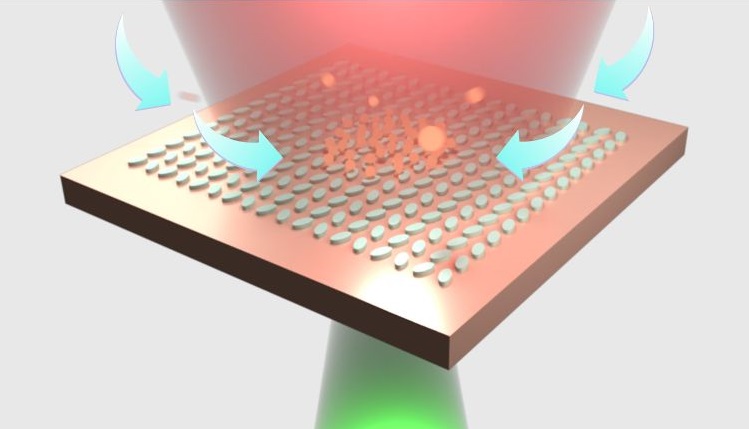A cutting-edge practice by two Vanderbilt researchers that enhances light in nanoscale structures could help in the detection of diseases like cancer.

The work by Justus Ndukaife, assistant professor of electrical engineering, and Sen Yang, a recent Ph.D. graduate from Ndukaife’s lab in Interdisciplinary Materials Science under Ndukaife, was published in Nature’s Light: Science and Applications journal.
In their paper, they show how an engineered nanostructured surface – quasi-BIC dielectric metasurface – can be used to trap micro and sub-micron particles within seconds, which they say helps in the transport of analytes to biosensing surfaces. The metasurface can also serve as a sensor to detect the aggregated particles or molecules, and can be used to enhance fluorescence or Raman signals from the molecules, thereby boosting detection sensitivity, according to the researchers.
“Such a capability could be utilized to detect cancer associated vesicles after aggregating the vesicles for longitudinal patient treatment monitoring and early detection,” says Ndukaife, who heads the Laboratory for Innovation in Optofluidics and Nanophotonics (LION) at Vanderbilt.
He adds, “Our work is the first experimental demonstration of the use of quasi-BIC for manipulating fluid flow and suspended particles.”
Last year, Ndukaife received a prestigious NSF CAREER Award for foundational research in cell-to-cell communication. Part of the five-year, $508,000 grant will support international education and outreach activities to young scholars in West Africa in collaboration with the University of Nigeria, as well as local outreach activities in Nashville.
Contact: Lucas Johnson, lucas.l.johnson@vanderbilt.edu